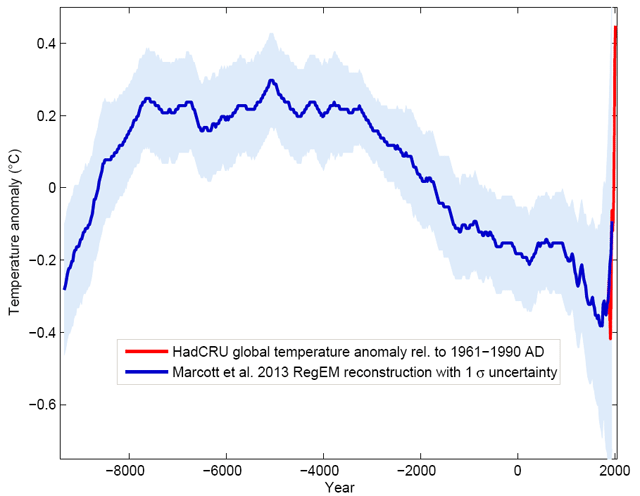Most of this post is just repetition of your mistakes, errors and/or lies, and does not require further response. Anyway...
Again, the purpose of the land stations is not to produce one single average temperature of the entire planet. The purpose is to determine how much temperatures have changed relative to earlier time periods. We make adjustments because we don't want those results to be biased by, for example, an urban heat island that is biasing the measurements; or a change in the measurement protocol.
Ironically, many of the adjustments reduce the official recorded temperatures. Go figure.
By the way, all of the raw data is publicly available, as are the algorithms and computer programs used to make the adjustments. Wow. Those sneaky bastards, being all transparent! Oh, wait...
I don't need to know the temperature of every square centimeter of my body to know whether I have a fever. All I need is to measure a consistent location, in a reasonably consistent manner. And yes, this is sufficiently precise to provide critical medical information to whomever requires it.
Along the same lines, we don't need an average of the temperature of every square inch of the planet. We are using consistent locations, using as consistent a method as possible. We are also using large numbers of sites to corroborate the data. This gives us a good picture of differences in temperatures in various periods, which is typically what we need to know.
Uh, hello? I wasn't saying those were the only options. The data is available so that researchers can use whatever baseline is relevant to their specific needs. One project may want to compare the present to the 20th century average; another may want to focus on the most recent 30 years; a third may look for decadal patterns.
I hate to break this to you, but... there really isn't a problem saying that "Saratoga is 73ºF." We do it every single day, and it's quite useful. Even though it does not tell us the precise temperature of every cubic centimeter of the town, it is more than sufficient to know whether or not you need a jacket. Thanks for demonstrating the absurdity of your position.
Thanks again for helping me prove my point.
Most people only use one thermometer. And it works quite well.
My goal is to live in my house, and to keep it at a reasonable temperature. If I only use the attic for storage, then incorporating the attic temperature into the HVAC system will actually be detrimental, as it will bias the system in unproductive ways. If I only use the garage to store a car, the temperature of the garage is irrelevant. The thermostat does not need to construct an average of every cubic millimeter of the house in order to do its job. One site of measurement is usually sufficient.
Measuring global temperatures for the purposes of determining temperature anomalies requires a bit more precision and calibration than your home's thermostat. That's why we use thousands of stations and precise protocols. In fact, the measurement systems are sensitive enough to be affected by the time of day when the 24-hour measurements are collected and averaged.
All you're doing is demanding superfluous and unnecessary amounts of data. Pass.


